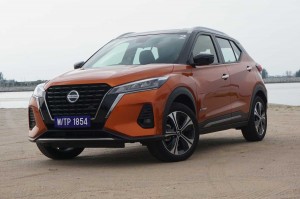STARPICKS
For years, environmentalists and climate change activists have sounded the alarm about the consequences of global warming.
As a responsible corporate citizen, Toyota takes a firm stand against climate change by implementing sustainable practices, investing in eco-friendly technologies, and actively contributing to global efforts for a greener future.
As such, Toyota continues to pursue a multi-pathway approach to achieve carbon neutrality by offering different powertrains that can include hydrogen internal combustion engine vehicle (HICEV), fuel cell electric vehicle (FCEV), plug-in hybrid electric vehicle (PHEV), hybrid electric vehicle (HEV) and even conventional internal combustion engines (ICE) powered by alternative fuels.
With a proven track record worldwide, Toyota has sold over 20 million hybrid cars worldwide, making it the leader in sustainable mobility.
Toyota is committed to a no one-size-fits-all strategy and offering a diverse range of eco-friendly options that meet the unique needs of customers and regions, so that no one is left behind.
Championing a multi-pathway approach and appropriate life-cycle actions, Toyota’s solutions align with each country’s national interests and Sustainable Development Goals (SDG).

Toyota supports Malaysia’s ambitious goal of achieving net zero greenhouse gas emissions by 2050, a key milestone articulated in the National Energy Transition Roadmap (NETR).
By aligning its strategies with Malaysia’s environmental targets, Toyota underlines its dedication to fostering positive change in the automotive landscape.
Its efforts are aligned with the government’s Energy Transition agenda, the NETR as well as the Hydrogen Economy and Technology Roadmap (HETR).
UMW Toyota (UMWT)’s groundbreaking nine-day Beyond Zero showcase in late February, at Technology Park Malaysia, displayed electrified technologies including HEVs, battery electric vehicles (BEVs) and FCEVs.
These included the stylish all-electric bZ4X, Hilux BEV pick-up truck and the e-Pallete, a symbol of Toyota’s transition from automaker to mobility provider.

The concept Toyota Hilux BEV features a double wishbone front suspension and a sturdy rear suspension leaf spring.
The e-Palette offers flexibility, featuring an open control interface and an optional automated driving system.
FCEV models include the Toyota Mirai, GranAce, Hilux FCEV and the Light Duty Truck FCEV.
The second-generation Mirai five-seater sedan has a third hydrogen fuel tank added, contributing to a 30% increase in the car’s driving range to 650km (compared with its predecessor).
These hydrogen-powered vehicles combine sleek design and dynamic performance, utilising fuel cell technology to generate electricity from hydrogen and oxygen.
The only emission produced by a hydrogen fuel cell is water vapour.
Another highlight was the hydrogen-powered SORA bus, a clean mobility solution that exemplifies Toyota’s commitment to sustainable transportation.
“SORA” stands for ‘Sky, Ocean, River, Air’, symbolising the interconnectedness of the earth’s water cycle.

The hydrogen-powered SORA bus is a clean mobility solution that exemplifies Toyota’s commitment to sustainable transportation.
As a showcase of eco-friendly innovations, Beyond Zero aligns with Toyota’s global pursuit of Carbon Neutrality by 2050.
UMWT president Datuk Ravindran K said Toyota envisioned a future where it would ensure sustainable mobility for everyone.
“Our promise, encapsulated in ‘Move Your World,’ is to forge a brighter, sustainable, and more connected future for all Malaysians. Let us embrace the journey – where innovation, sustainability and societal well-being converge seamlessly – taking us Beyond Zero,” he said.
In Malaysia, the automaker is also focused on inclusive community development, creating awareness through the Toyota Eco Youth (TEY) initiative which has garnered participation from 2,690 students across the nation – educating the youth on sustainability.

UMWT president Datuk Ravindran K said Toyota envisioned a future where it would ensure sustainable mobility for everyone.
Meanwhile, UMWT’s recently launched and much-awaited Toyota Hiace Panel Van 3.0L 2024 features substantial upgrades.
The enhanced 3.0-litre engine, transitioning from the previous 2.5-litre, complies with Euro 4 emission standards, ensuring cleaner emissions in line with the company’s commitment to a low-carbon ecosystem.
In the face of escalating climate change impacts, Toyota as a responsible corporate entity, takes a resolute stance against global warming through redefining mobility.
As this transformative journey unfolds, Toyota envisions a brighter, more sustainable, and more connected future for all.

The second-generation hydrogen-powered Toyota Mirai five-seater sedan. The only emission produced by a hydrogen fuel cell is water vapour.












